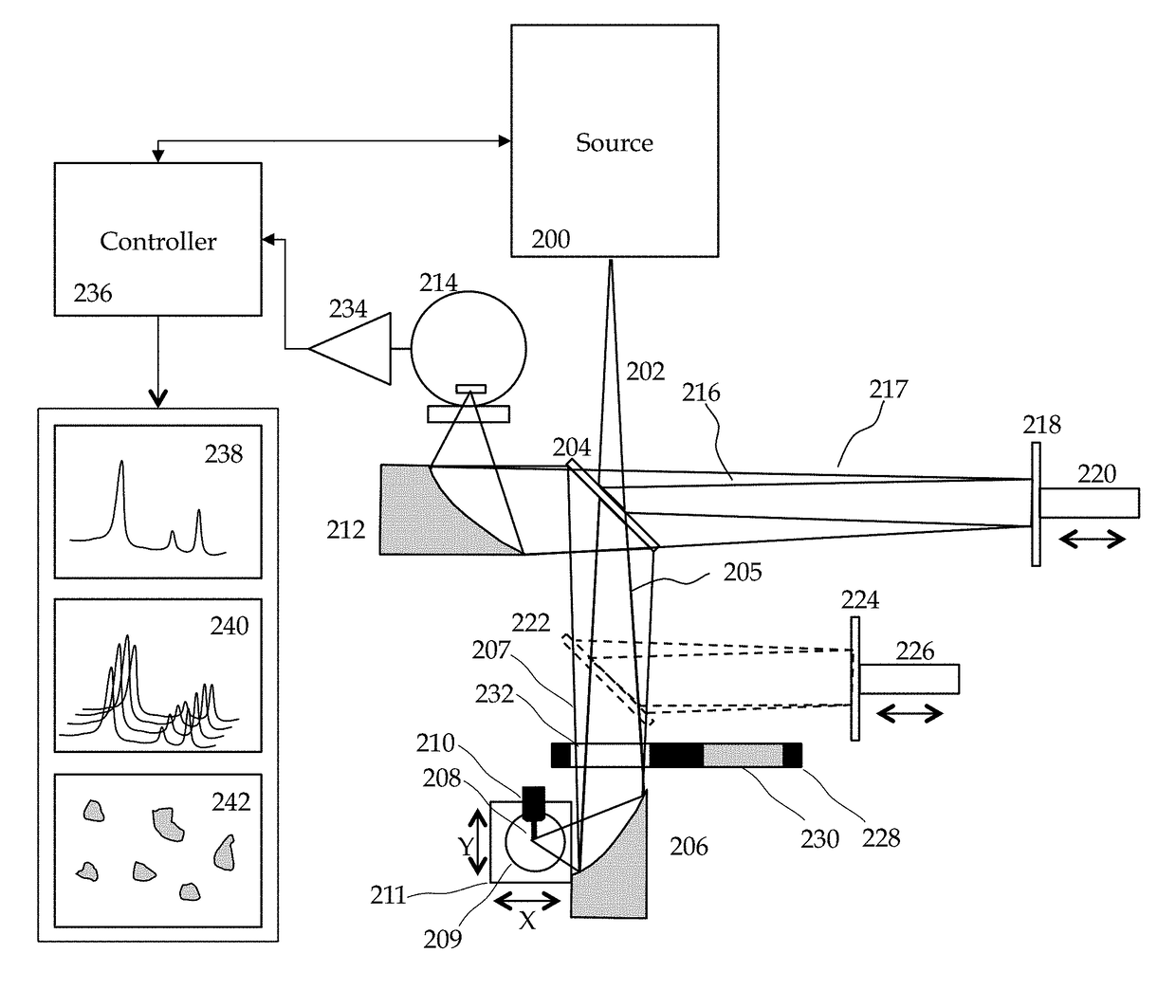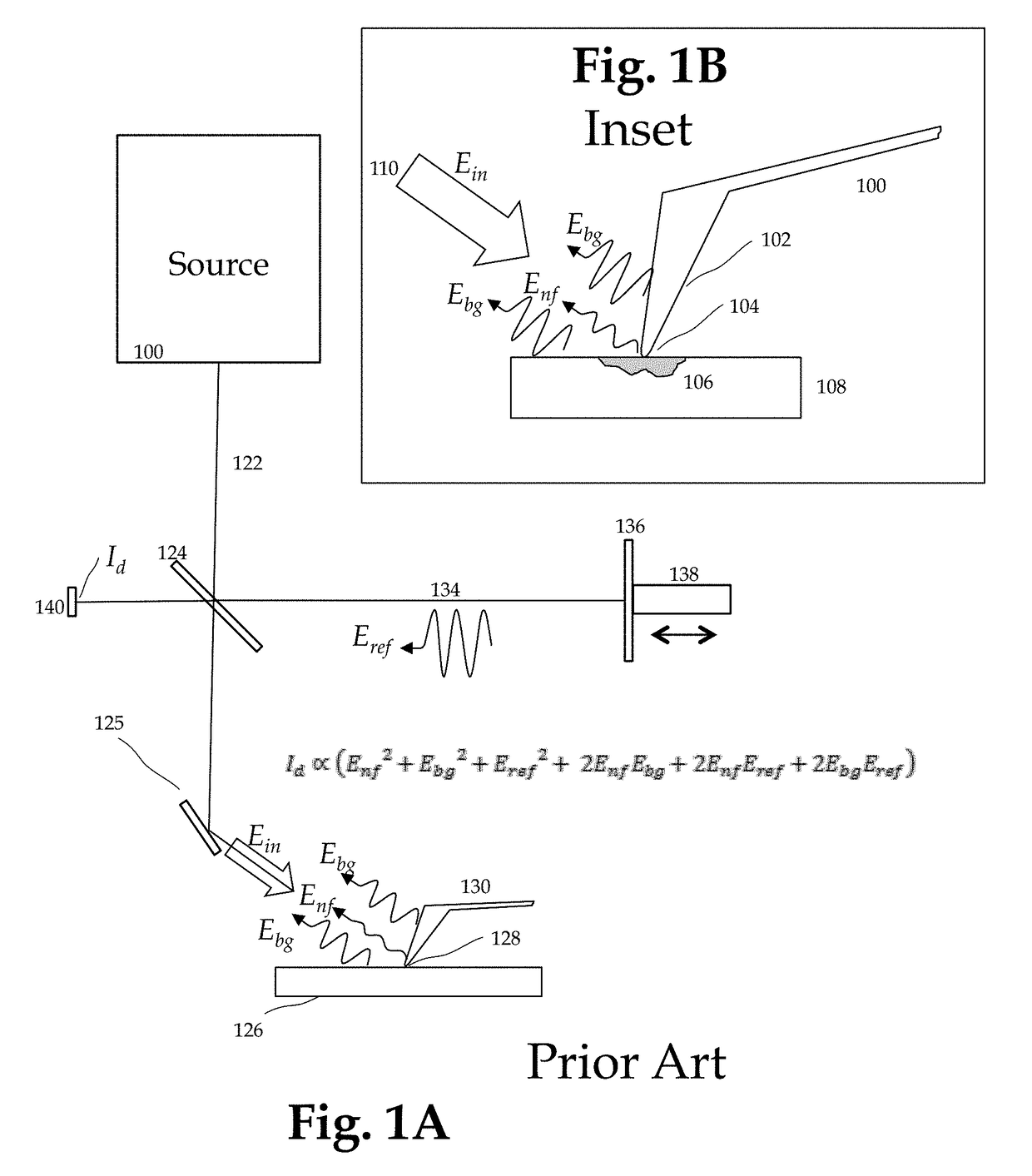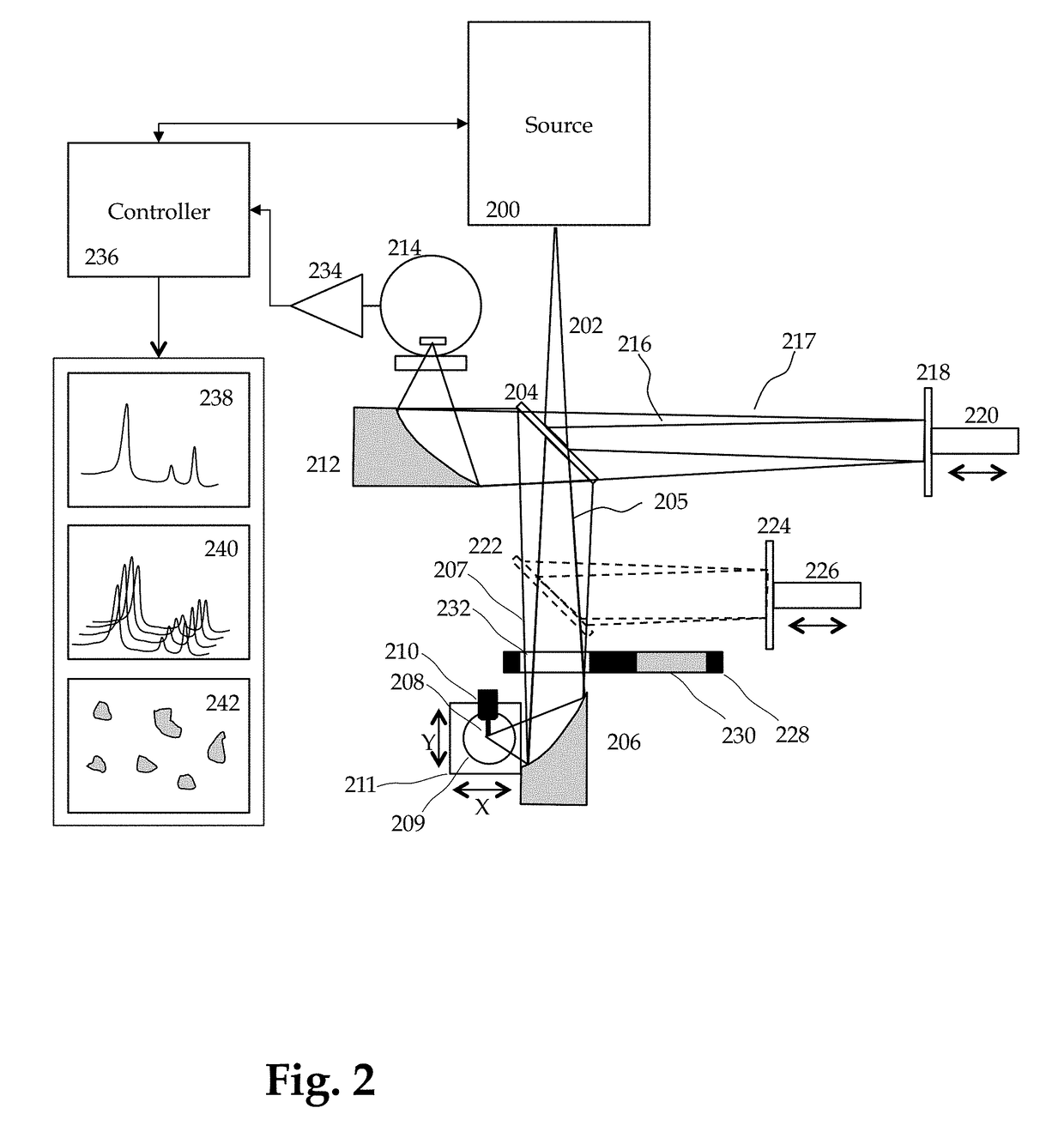Method and Apparatus for Infrared Scattering Scanning Near-field Optical Microscopy with High Speed Point Spectroscopy
a near-field optical microscopy and high-speed point spectroscopy technology, applied in the direction of scanning probe techniques, optical radiation measurement, instruments, etc., can solve the problems of large background scattering ebg, severe practical limits on the amount of background scattering amplification, and each has significant limitations. achieve high-speed demodulation, high sensitivity measurement, rapid and accurate calculation
- Summary
- Abstract
- Description
- Claims
- Application Information
AI Technical Summary
Benefits of technology
Problems solved by technology
Method used
Image
Examples
Embodiment Construction
[0054]FIG. 2 shows a simplified schematic of an embodiment of the current invention. Infrared light 202 is emitted from source 200 towards a beam splitter 204. In FIG. 2, the light 202 is shown as diverging, but it may also be substantially collimated. Light 205 that passes through the beam splitter continues towards a focusing optic 206 that focuses the infrared light onto a sample 209 in the vicinity of the end 208 of a probe 210 of a probe microscope. (FIG. 2 shows a top view looking down on a sample and a cantilever probe—the probe tip and tip apex are not illustrated in this view.) Light scattered from the tip and sample is collected by collection optics. In the simplest implementation the collection optics are the same as focusing optics 206, but alternate and / or additional collection optics can be used instead. Light 207 collected from the collection optic is returned to the beam splitter 204 where it is focused via another focusing optic 212 onto the surface of an infrared d...
PUM
| Property | Measurement | Unit |
|---|---|---|
| wavenumber | aaaaa | aaaaa |
| optical property | aaaaa | aaaaa |
| probe microscope | aaaaa | aaaaa |
Abstract
Description
Claims
Application Information
 Login to View More
Login to View More - R&D
- Intellectual Property
- Life Sciences
- Materials
- Tech Scout
- Unparalleled Data Quality
- Higher Quality Content
- 60% Fewer Hallucinations
Browse by: Latest US Patents, China's latest patents, Technical Efficacy Thesaurus, Application Domain, Technology Topic, Popular Technical Reports.
© 2025 PatSnap. All rights reserved.Legal|Privacy policy|Modern Slavery Act Transparency Statement|Sitemap|About US| Contact US: help@patsnap.com



